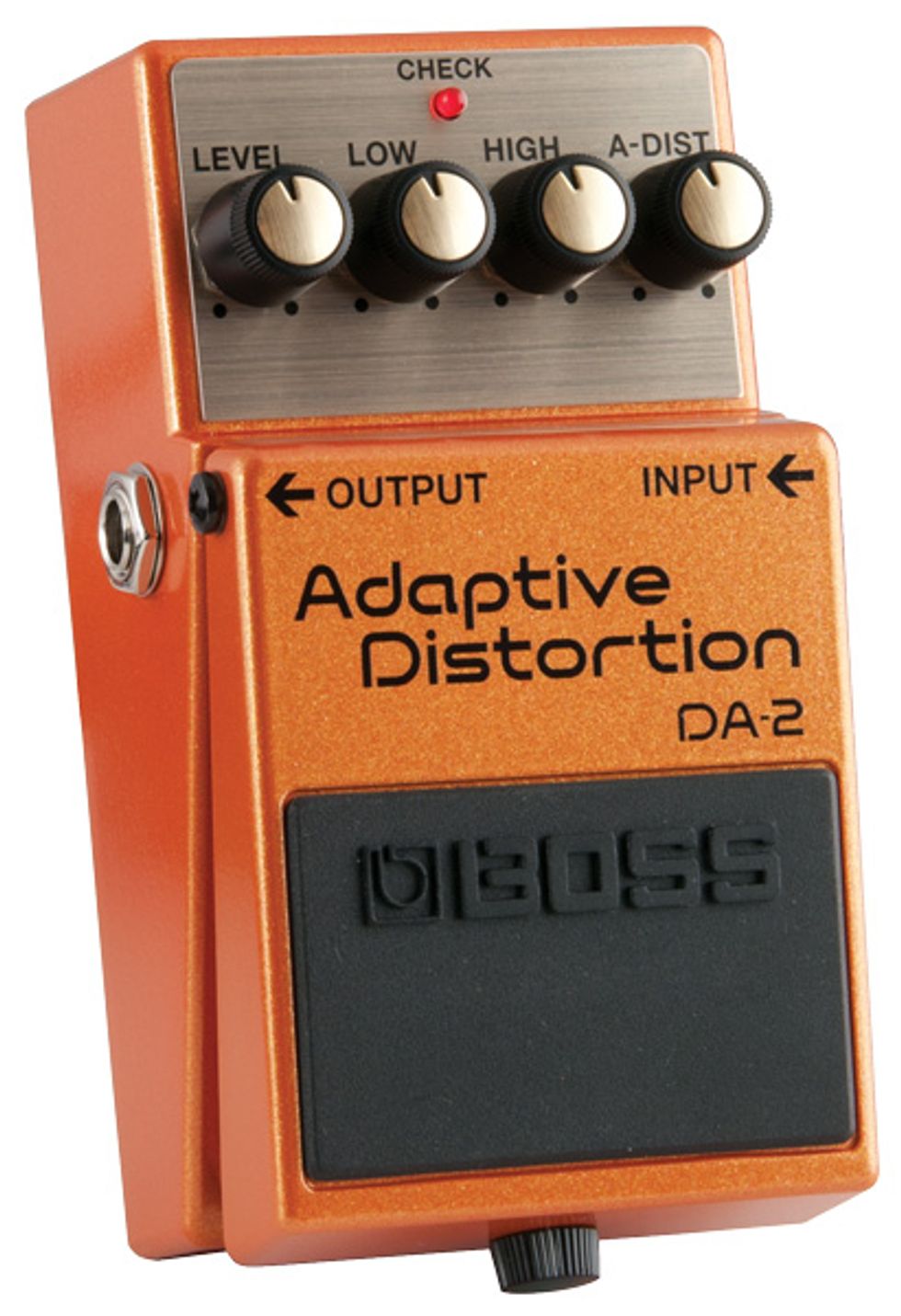Classic Boss pedals like the DS-1 and DD-3 have been staples on pro boards for decades. But Boss has never rested on its laurels or lived in the past. The shapes of the enclosures may occasionally change, but the designers are always looking forward. Their COSM technology helped pioneer the modeling trend, and they’ve recently developed a new DSP technology called Multi-Dimensional Processing (MDP). For this review, we take a look at the DA-2 Adaptive Distortion, one of three new Boss pedals equipped with MDP technology.
Keeping up with the Changes
At a glance, the DA-2 looks much like any conventional distortion pedal. It has the same four knobs you’d see on countless dirt boxes—level, low, high, and gain—though the latter is labeled a-dist, which stands for “adaptive distortion.” What adaptive distortion means, in a nutshell, is that the pedal’s processor analyzes your playing in real time and makes processing shifts to provide the optimum settings for the playing situation, whether it’s low-register six-string chords, sparse double-stops on the E and B strings, or high-register runs. The manual doesn’t clarify exactly how the processing shifts work, so I tested the DA-2 with a DS-1 also in the chain, and always EQ’d similarly for each phase of the testing to see if I could get a clear picture by comparison.
To start, I set both EQ knobs to noon and cranked the gain. To see how the pedal would adapt to what I did, I played chords you might not often hear with distortion at any level, much less cranked: I ran through jazz-based sonorities like 13b9 and 7susb9 chords, all of which would typically sound like rubbish with that much dirt (there’s a reason why simple power chords are so popular in rock guitar), but all of the frequencies rang clear and tight, without any compression. I tried these same chords with the DS-1 and the sound was a little murky, with the notes blurring into each other. In this application, the DA-2 really shined.
Ratings
Pros:
Great overall distortion pedal.
Cons:
Slightly digital quality to the sound.
Tones:
Playability/Ease of Use:
Build/Design:
Value:
Street:
$129
Company
bossus.com
I then set the DA-2 at extreme EQ levels to make its processing shifts more obvious. First, I turned low all the way up and high all the way off. For rhythm playing, the sound was dark but defined. When I went high up the neck to play leads, I noticed the tone was crisper than a no-treble setting would normally yield. With the DS-1 at the same EQ setting, notes up high sounded woofy and warm, but less likely to cut through a mix. Next, I reversed the EQ scheme, turning high all the way up and low off. As I played lower-register power chords, the DA-2 seemed to produce a warmer sound for chords and a more razor-blade-like quality in response to chunky attack. With this EQ setting, the DS-1 sounded metallic regardless of what I played.
The Verdict
With the Boss DA-2 Adaptive Distortion, the idea of jettisoning tonal compromises and getting great lead and rhythm sounds at all times—without adjusting pedal settings—is very much an attainable reality. Because this technology is so new, it’s likely most people will buy the DA-2 as a distortion pedal rather than for the processing technology. That’s okay, because the adaptive technology’s impact is relatively subtle in the grand scheme of things. When it engages on its own, it’s not nearly as noticeable as, say, stepping on a mid-boost pedal in the middle of a solo. You might not even really notice the adaptive effect unless you had another pedal to immediately compare it with. But as they say, it's the little things that make a difference, and the DA-2 is well worth it for those little differences. Indeed, this is a solid distortion pedal with a few twists that can only enhance your playing experience.








![Rig Rundown: Russian Circles’ Mike Sullivan [2025]](https://www.premierguitar.com/media-library/youtube.jpg?id=62303631&width=1245&height=700&quality=70&coordinates=0%2C0%2C0%2C0)

















